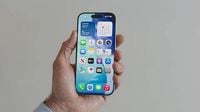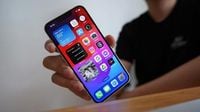Apple’s WWDC 2025 event, held on June 9, unveiled the much-anticipated iOS 26, marking a significant leap in the iPhone’s operating system with a striking new design and fresh features. Dubbed the "Liquid Glass" update, this release promises the most substantial visual overhaul in years, introducing a revamped home screen, redesigned apps, and new tools aimed at enhancing usability.
However, the excitement comes with a bittersweet note for owners of older iPhone models. Unlike last year, when Apple maintained support for all existing devices, this time around, the company has decided to drop compatibility for three iPhones: the iPhone XR, iPhone XS, and iPhone XS Max. These models, all launched in 2018, will not be able to upgrade to iOS 26 when it becomes available this fall.
Apple’s decision aligns with industry norms, as most smartphone manufacturers typically provide around seven years of software support. The trio of excluded models will be turning seven years old in September 2025, marking a natural endpoint for their software updates. While owners can continue using their devices, they will miss out on new features and critical security patches, potentially exposing their phones to increased risks from malware and other threats.
For those wondering if their iPhone will run iOS 26, the good news is that all models announced from 2019 onward are compatible. This includes a broad range of devices such as the iPhone SE (second generation and later), iPhone 11 series, iPhone 12 series, iPhone 13 series, iPhone 14 series, iPhone 15 series, and the newly announced iPhone 16 lineup. Essentially, if your phone debuted in 2019 or later, you’re set to enjoy the new update.
The iOS 26 update is not just about aesthetics. The Liquid Glass design refreshes the home screen with new app icons that feature a floating button design and improved dark mode options, creating a more cohesive experience across all Apple operating systems. The Phone app has been overhauled as well, allowing users to scroll through contacts, recent calls, and voicemail messages on a single screen. A new feature called Hold Assist will notify users when an agent picks up the phone, helping to avoid the dreaded elevator music.
Another standout feature is Live Translate, which enables real-time translation during phone calls and text conversations, breaking down language barriers effortlessly. Group messaging also gets an upgrade with the introduction of a Polls feature, making it easier for chat members to make decisions without the chaos of endless messages.
It’s worth noting that while many iPhones will support iOS 26, not all will be capable of running every new feature, especially those involving Apple’s advanced AI, branded as Apple Intelligence. This suite of AI-powered capabilities requires an iPhone 15 Pro or later. Until the launch of the iPhone 17 series in September, only seven models—the iPhone 15 Pro, 15 Pro Max, and the entire iPhone 16 family—will support the full range of iOS 26 features.
Apple is expected to release the general version of iOS 26 in mid-September 2025, just ahead of the anticipated launch of the iPhone 17 lineup. For enthusiasts eager to get an early look, a developer beta is already available, with a more stable public beta slated for July. However, early beta versions can be buggy and unstable, as the software is still in the refinement phase. Past experiences, such as the iOS 17 beta in 2023, demonstrate how Apple uses user feedback to make key interface adjustments—like restoring the "End" call button to its familiar central position after testers expressed dissatisfaction with its initial relocation.
On the iPad front, the updates are similarly inclusive but with some limitations. iPadOS 26 will drop support for the 7th-generation iPad, introduced in 2019, which relies on the older Apple A10X chip from 2017. This is consistent with Apple’s approach to balancing device age and technical capability when deciding which models can run the latest software.
For those holding onto older devices like the iPhone XR, XS, or the 7th-gen iPad, Apple typically continues to provide security-only patches for one to two years after a device stops receiving the newest OS updates. However, these updates are less predictable for iPhones and iPads than for Macs, so users should be mindful of the potential security risks over time.
In summary, iOS 26 represents a bold step forward for Apple’s mobile ecosystem, blending a fresh visual identity with practical enhancements designed to improve everyday interactions. While the cut-off for older devices may disappoint some, it reflects a standard lifecycle in the tech world, encouraging users to embrace newer hardware that can fully leverage the latest innovations. As the fall release approaches, Apple fans can look forward to experiencing the new Liquid Glass design and features firsthand, alongside the debut of the iPhone 17 series.





